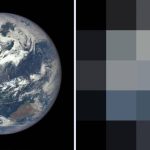Key Takeaways:
- Australian PhD student co-discovered an Earth-sized planet 40 light-years away.
- The planet, named Gliese 12b, could potentially support liquid water on its surface.
- Gliese 12b orbits a cool red dwarf star and is cooler than Venus.
- Studying Gliese 12b’s atmosphere could help us understand the difference between Earth and Venus.
- NASA’s James Webb telescope may be used to study Gliese 12b further.
An Australian university student co-led the discovery of an Earth-sized, potentially habitable planet located 40 light years away.
Shishir Dholakia, a PhD candidate in astrophysics at the University of Southern Queensland, was part of the international team that made the discovery, which was published in the Royal Astronomical Society’s Monthly Notices.
He described the “Eureka moment” of discovering the planet, which has since been named Gliese 12b.
“We did the back-of-the envelope calculations,” he said. “We worked out it’s probably Earth-sized, it’s probably temperate, and that it’s really, really nearby. In the span of a day we were like, ‘Oh, we have to write this up. This is really cool.
“It could be at the right temperature for liquid water to pool on the surface … [that’s] important because we think planets are potentially habitable if they can have liquid water on them.
“And so in this great search for life that we’re undertaking we want to try to find planets that are potentially habitable, and this could be a good contender.”
Gliese 12b is roughly the size of Earth or slightly smaller than Venus. The surface temperature is estimated to be 42 degrees Celsius.
Its 12-day orbit revolves around Gliese 12, a cool red dwarf in the constellation Pisces. Gliese 12 is roughly one-quarter the size of the sun and has approximately 60% of its surface temperature.
Dholakia co-led the team that worked with Nasa to confirm the new planet, along with a PhD student from the University of Edinburgh, Larissa Palethorpe.
“It’s only 40 light years away, and this might not mean that we can actually get to it any time in the near future, but it does mean that we can point the largest space telescopes in the world at it, and understand what its atmosphere might be like,” Dholakia said.
That could shed light on our own solar system.
“Earth and Venus are classic examples of how an atmosphere can change the surface of a planet. So Earth is this haven for life as we know it and Venus is hot enough to melt lead on its surface.
“And the difference between these two planets is largely because Venus has a very hostile atmosphere. So we think that this planet, which is right in between Earth and Venus in terms of the amount of light that it gets from its sun, could actually bridge the gap … and help us understand why Venus and Earth are so different.
He said he mostly enjoyed the process although it was occasionally “intimidating”.
According to NASA’s website, the transiting exoplanet survey satellite Tess is used to observe the brightness changes of tens of thousands of stars in order to capture “transits” – “brief, regular dimmings of stars caused by the passage of orbiting worlds”.
It is easier to detect Earth-sized planets orbiting red dwarfs because, as a smaller star, the transit dimming is greater, and the lower mass means the orbiting planet causes a greater “wobble” or “reflex motion” in the star.
Nasa said Gliese 12b was a good candidate for further study using the James Webb space telescope.
A prominent US astronomer believes there is a new planet lurking even closer to home. According to ABC, Michael Brown, a planetary astronomy professor at the California Institute of Technology, said on Friday that he does not see how we could have a solar system “without Planet Nine”.
For years, he has claimed that the peculiar paths of various objects around Neptune indicate the gravitational pull of another planet, but no one has been able to locate it.
In a new study, which has not yet been peer-reviewed, Brown and his team ran simulations and concluded that there was a one-in-a-million chance that Planet Nine did not exist.


